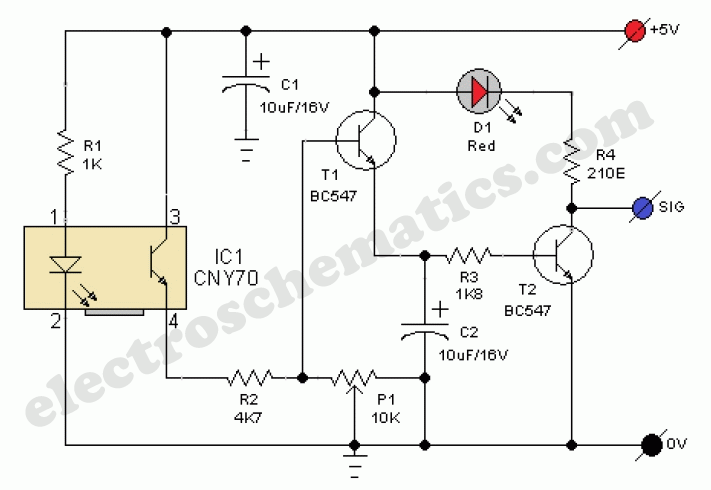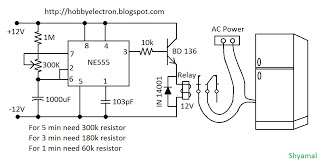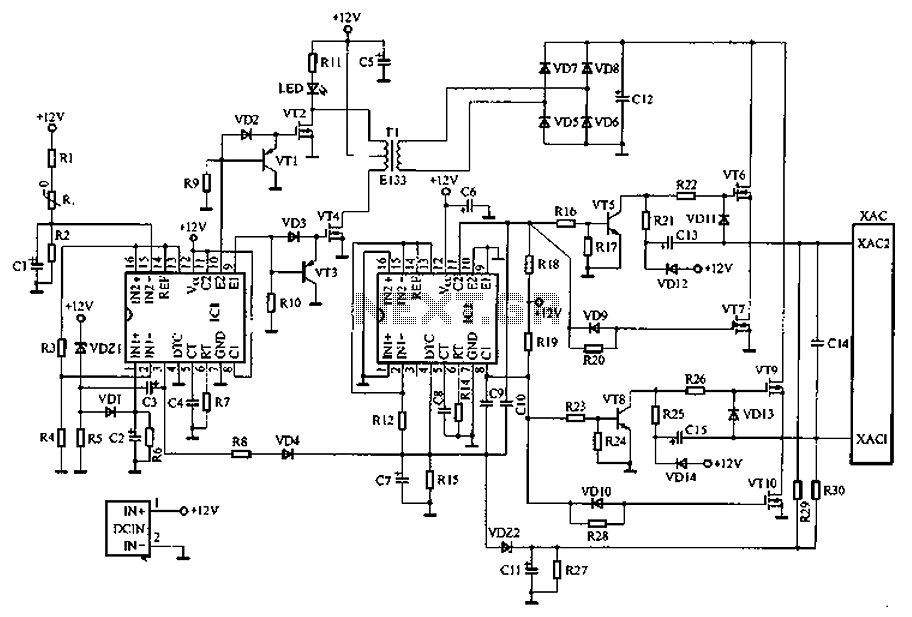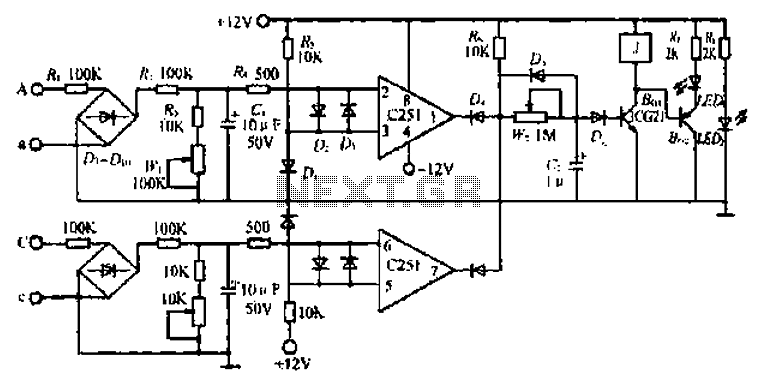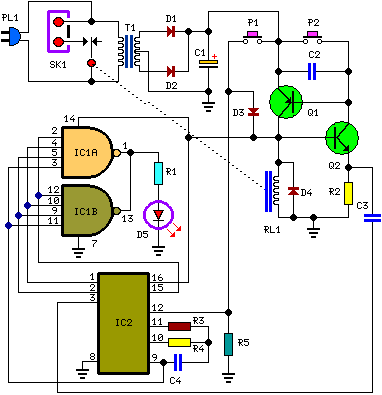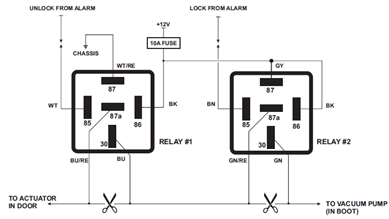
Photo film processor circuit
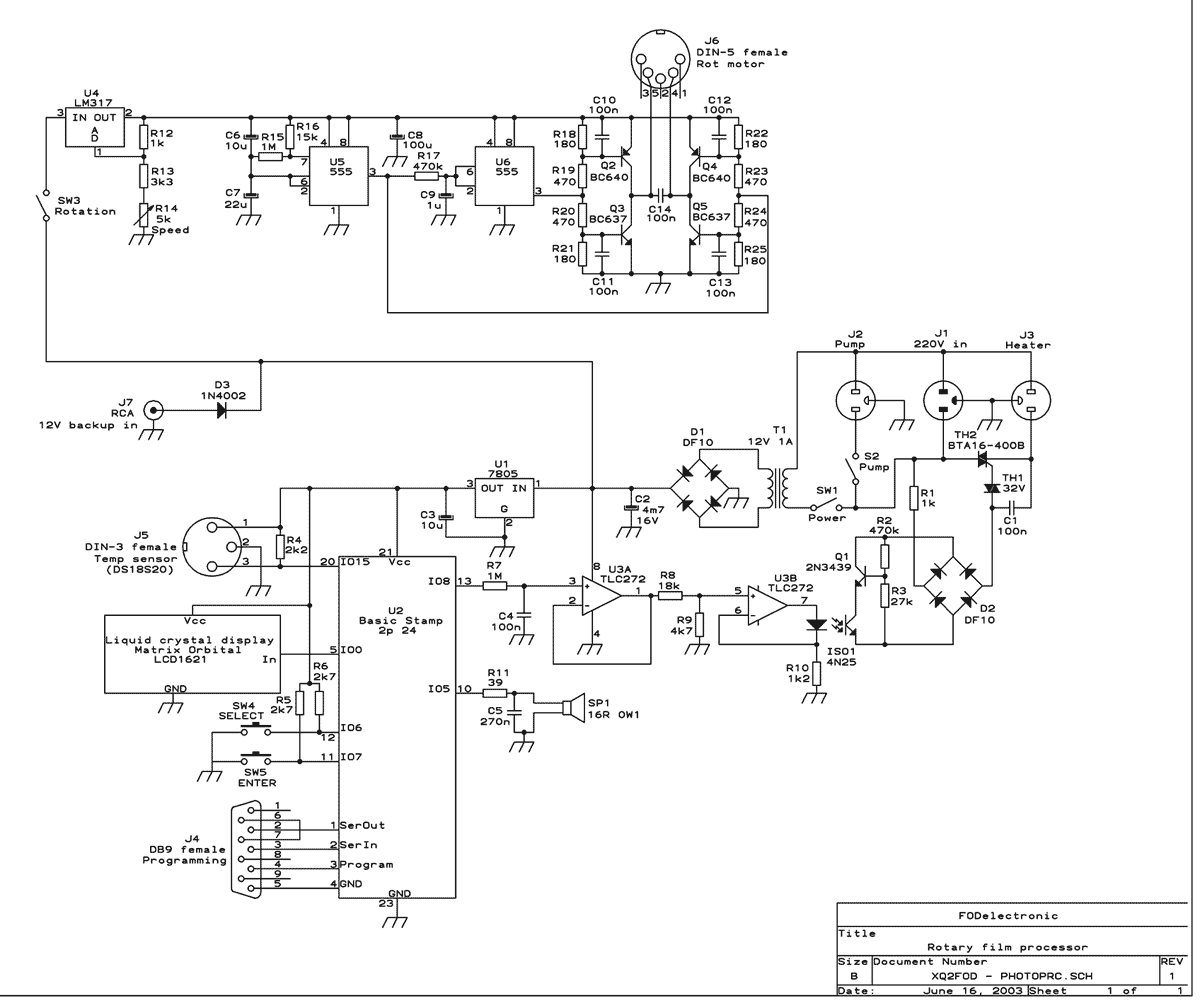
This machine essentially does three things: It controls the process temperature, provides constant agitation of the chemical baths, and performs the timing. The operator must pour in and out the liquids by hand. The heart of the circuit is a Basic Stamp 2p microcontroller. It has a program loaded that contains several film processing algorithms. For each of them, the process temperature, the bath sequence, the bath names, and durations, are stored. The program offers the options via a menu, displayed on a 16x2 character alphanumeric backlit LCD, while user input is through two pushbuttons. A small speaker gives confirmation beeps, and is also used to signal the end of the process time for each bath. The processor reads a Dallas DS18S20 digital temperature sensor, which is immersed in the water bath, and uses this information to display the temperature on the LCD, and to control the phase angle of conduction for the heater. For this purpose, a proportional-integral control characteristic is implemented in software. This routine generates an analog output value, which is output on a digital pin through pulse width modulation, and used in an extremely simple but effective optocoupled phase control circuit. The power device is an insulated-tab TRIAC which can be mounted directly to the metal box of the processor. This TRIAC can easily control the machine's 2000 Watt heater.
Rotation control is implemented completely separate from the microprocessor. 555 chips are so cheap that it's not worth the effort to put the rotation control routine into the Basic Stamp, which would generate some difficulties with precise timekeeping, since the Stamp has no real-time multitasking. And anyway, the power and interface circuit would be necessary. So two 555 timers are used, connected in such a fashion that the rotation motor runs 30 seconds to one side, then stops for one second, runs 30 seconds to the other side, stops, and so on. To control the rotation speed, the entire "reversomatic" circuit is powered from an adjustable voltage regulator. This IC must be mounted with insulation, as its tab is connected to the internal circuit. A simple switch is used to enable or disable rotation.
The power supply for the electronics is totally conventional. There isn't much to say about it, except that an auxiliary 12V input is provided. You can connect any 12V battery here. During normal operation, the internal voltage is higher and the battery will just sit there, but in the event of a power failure, the battery keeps the electronics running, thus saving the film from suspended processing. Depending on the likelihood of power failures in the area, this can be an important feature. The heater, of course, stops working when the power fails, but given the large thermal mass of the 30 liters of water used in this processor, the temperature holds stable enough to complete processing without severe degradation.
Two DIN connectors are used for the rotator deck and the temperature sensor. They are wired in such a way that accidental connection of the wrong device to an outlet will not cause any damage. It would be possible to use a single 5-pin connector for both the motor and the sensor if desired, creating a single connection point.
The line voltage outputs to the heater and circulation pump use standard wall outlets. For line power input, a directly connected cable or an appropriate input connector can be used, ensuring it can handle the 2kW power of the heater. Many connectors made for electronic equipment may not be suitable.
Additionally, a DB-9 serial port is included, which connects directly to a PC serial port. Using the software available for free on the Parallax website, the Basic Stamp software can be loaded without opening the box. This feature allows for quick updates to algorithms for new film processes or adjustments to parameters for specific processes.
The current software implements the Tetenal 3-bath process for E6 slide films, with three versions for the first, second, and third use of each batch of chemistry, accounting for slightly longer process times with each consecutive use. The times are set according to Tetenal's recommendations, with the temperature adjusted by half a degree higher than the nominal process temperature to compensate for cooling when removing the processing tank for filling.
The enclosure for this project is constructed from a single piece of 1mm thick aluminum sheet, cut and bent to form a slanted top and side walls, with bent corners to attach the bottom cover. The entire box is finished with a gray spray paint for aesthetics and protection.This machine essentially does three things: It controls the process temperature, provides constant agitation of the chemical baths, and performs the timing. The operator must pour in and out the liquids by hand. The heart of the circuit is a Basic Stamp 2p microcontroller. It has a program loaded that contains several film processing algorithms. For each of them, the process temperature, the bath sequence, the bath names, and durations, are stored.
The program offers the options via a menu, displayed on a 16x2 character alphanumeric backlit LCD, while user input is through two pushbuttons. A small speaker gives confirmation beeps, and is also used to signal the end of the process time for each bath.
The processor reads a Dallas DS18S20 digital temperature sensor, which is immersed in the water bath, and uses this information to display the temperature on the LCD, and to control the phase angle of conduction for the heater. For this purpose, a proportional-integral control characteristic is implemented in software. This routine generates an analog output value, which is output on a digital pin through pulse width modulation, and used in an extremely simple but effective optocoupled phase control circuit.
The power device is an insulated-tab TRIAC which can be mounted directly to the metal box of the processor. This TRIAC can easily control de machine's 2000 Watt heater. Rotation control is implemented completely separate from the microprocessor. 555 chips are so cheap that it's not worth the effort to put the rotation control routine into the Basic Stamp, which would generate some difficulties with precise timekeeping, since the Stamp has no realtime multitasking.
And anyway the power and interface circuit would be necessary. So I used two 555 timers, connected in such a fashion that the rotation motor runs 30 seconds to one side, then stops for one second, runs 30 seconds to the other side, stops, and so on. To control the rotation speed, the entire "reversomatic" circuit is powered from an adjustable voltage regulator.
This IC must be mounted with insulation, as its tab is connected to the internal circuit. A simple switch is used to enable or disable rotation. The power supply for the electronics is totally conventional. There isn't much to say about it, except that an auxiliary 12V input is provided. You can connect any 12V battery here. During normal operation, the internal voltage is higher and the battery will just sit there, but in the event of a power failure the battery keeps the electronics running, thus saving your film from suspended processing! Depending on the likelihood of power failures in your area, this can be an important feature. The heater of course stops working when the power fails, but given the large thermal mass of the 30 liters of water used in this processor, the temperature holds stable enough to complete processing without severe degradation.
Two DIN connectors are used for the rotator deck and the temperature sensor. They are wired in such a way that accidental connection of the wrong device to an outlet will not cause any damage. Actually, it would be perfectly possible to use a single 5-pin connector for both the motor and the sensor.
If you don't mind having the two units bound together by a sort of umbilical cord, you can do that. The line voltage outputs to the heater and circulation pump use standard wall outlets. For line power input, you can use a directly connected cable, or some kind of appropriate input connector. Make sure it's beefy enough to handle the 2kW power of the heater! Many connectors made for electronic equipment are not. There is also a DB-9 serial port. This is directly connected to a PC serial port. Using the software provided for free on the Parallax web site, you can load the software for the Basic Stamp without even opening the box.
This is convenient specially to quickly add algorithms for new film processes you may want to run, or to tweak the parameters for some special kind of process. The software I'm using presently implements only the Tetenal 3-bath process for E6 slide films. I have three versions of it, for the first, second and third use of each batch of chemistry, considering the slightly longer process times in each consecutive use.
The times are exactly those recommended by Tetenal, which works great for me, while the temperature is set one half degree higher than the nominal process temperature, to compensate for the slight cooling when taking the processing tank out of the water bath for filling in the chemistry. The temperature and times can be easily varied in the software. The box for this project was made from a single piece of 1mm thick aluminum sheet. It was cut and bend to the proper shape to form a slanted top and the side walls, complete with bent corners to attach the bottom cover.
The entire box was spray-painted gray. 🔗 External reference
Rotation control is implemented completely separate from the microprocessor. 555 chips are so cheap that it's not worth the effort to put the rotation control routine into the Basic Stamp, which would generate some difficulties with precise timekeeping, since the Stamp has no real-time multitasking. And anyway, the power and interface circuit would be necessary. So two 555 timers are used, connected in such a fashion that the rotation motor runs 30 seconds to one side, then stops for one second, runs 30 seconds to the other side, stops, and so on. To control the rotation speed, the entire "reversomatic" circuit is powered from an adjustable voltage regulator. This IC must be mounted with insulation, as its tab is connected to the internal circuit. A simple switch is used to enable or disable rotation.
The power supply for the electronics is totally conventional. There isn't much to say about it, except that an auxiliary 12V input is provided. You can connect any 12V battery here. During normal operation, the internal voltage is higher and the battery will just sit there, but in the event of a power failure, the battery keeps the electronics running, thus saving the film from suspended processing. Depending on the likelihood of power failures in the area, this can be an important feature. The heater, of course, stops working when the power fails, but given the large thermal mass of the 30 liters of water used in this processor, the temperature holds stable enough to complete processing without severe degradation.
Two DIN connectors are used for the rotator deck and the temperature sensor. They are wired in such a way that accidental connection of the wrong device to an outlet will not cause any damage. It would be possible to use a single 5-pin connector for both the motor and the sensor if desired, creating a single connection point.
The line voltage outputs to the heater and circulation pump use standard wall outlets. For line power input, a directly connected cable or an appropriate input connector can be used, ensuring it can handle the 2kW power of the heater. Many connectors made for electronic equipment may not be suitable.
Additionally, a DB-9 serial port is included, which connects directly to a PC serial port. Using the software available for free on the Parallax website, the Basic Stamp software can be loaded without opening the box. This feature allows for quick updates to algorithms for new film processes or adjustments to parameters for specific processes.
The current software implements the Tetenal 3-bath process for E6 slide films, with three versions for the first, second, and third use of each batch of chemistry, accounting for slightly longer process times with each consecutive use. The times are set according to Tetenal's recommendations, with the temperature adjusted by half a degree higher than the nominal process temperature to compensate for cooling when removing the processing tank for filling.
The enclosure for this project is constructed from a single piece of 1mm thick aluminum sheet, cut and bent to form a slanted top and side walls, with bent corners to attach the bottom cover. The entire box is finished with a gray spray paint for aesthetics and protection.This machine essentially does three things: It controls the process temperature, provides constant agitation of the chemical baths, and performs the timing. The operator must pour in and out the liquids by hand. The heart of the circuit is a Basic Stamp 2p microcontroller. It has a program loaded that contains several film processing algorithms. For each of them, the process temperature, the bath sequence, the bath names, and durations, are stored.
The program offers the options via a menu, displayed on a 16x2 character alphanumeric backlit LCD, while user input is through two pushbuttons. A small speaker gives confirmation beeps, and is also used to signal the end of the process time for each bath.
The processor reads a Dallas DS18S20 digital temperature sensor, which is immersed in the water bath, and uses this information to display the temperature on the LCD, and to control the phase angle of conduction for the heater. For this purpose, a proportional-integral control characteristic is implemented in software. This routine generates an analog output value, which is output on a digital pin through pulse width modulation, and used in an extremely simple but effective optocoupled phase control circuit.
The power device is an insulated-tab TRIAC which can be mounted directly to the metal box of the processor. This TRIAC can easily control de machine's 2000 Watt heater. Rotation control is implemented completely separate from the microprocessor. 555 chips are so cheap that it's not worth the effort to put the rotation control routine into the Basic Stamp, which would generate some difficulties with precise timekeeping, since the Stamp has no realtime multitasking.
And anyway the power and interface circuit would be necessary. So I used two 555 timers, connected in such a fashion that the rotation motor runs 30 seconds to one side, then stops for one second, runs 30 seconds to the other side, stops, and so on. To control the rotation speed, the entire "reversomatic" circuit is powered from an adjustable voltage regulator.
This IC must be mounted with insulation, as its tab is connected to the internal circuit. A simple switch is used to enable or disable rotation. The power supply for the electronics is totally conventional. There isn't much to say about it, except that an auxiliary 12V input is provided. You can connect any 12V battery here. During normal operation, the internal voltage is higher and the battery will just sit there, but in the event of a power failure the battery keeps the electronics running, thus saving your film from suspended processing! Depending on the likelihood of power failures in your area, this can be an important feature. The heater of course stops working when the power fails, but given the large thermal mass of the 30 liters of water used in this processor, the temperature holds stable enough to complete processing without severe degradation.
Two DIN connectors are used for the rotator deck and the temperature sensor. They are wired in such a way that accidental connection of the wrong device to an outlet will not cause any damage. Actually, it would be perfectly possible to use a single 5-pin connector for both the motor and the sensor.
If you don't mind having the two units bound together by a sort of umbilical cord, you can do that. The line voltage outputs to the heater and circulation pump use standard wall outlets. For line power input, you can use a directly connected cable, or some kind of appropriate input connector. Make sure it's beefy enough to handle the 2kW power of the heater! Many connectors made for electronic equipment are not. There is also a DB-9 serial port. This is directly connected to a PC serial port. Using the software provided for free on the Parallax web site, you can load the software for the Basic Stamp without even opening the box.
This is convenient specially to quickly add algorithms for new film processes you may want to run, or to tweak the parameters for some special kind of process. The software I'm using presently implements only the Tetenal 3-bath process for E6 slide films. I have three versions of it, for the first, second and third use of each batch of chemistry, considering the slightly longer process times in each consecutive use.
The times are exactly those recommended by Tetenal, which works great for me, while the temperature is set one half degree higher than the nominal process temperature, to compensate for the slight cooling when taking the processing tank out of the water bath for filling in the chemistry. The temperature and times can be easily varied in the software. The box for this project was made from a single piece of 1mm thick aluminum sheet. It was cut and bend to the proper shape to form a slanted top and the side walls, complete with bent corners to attach the bottom cover.
The entire box was spray-painted gray. 🔗 External reference
